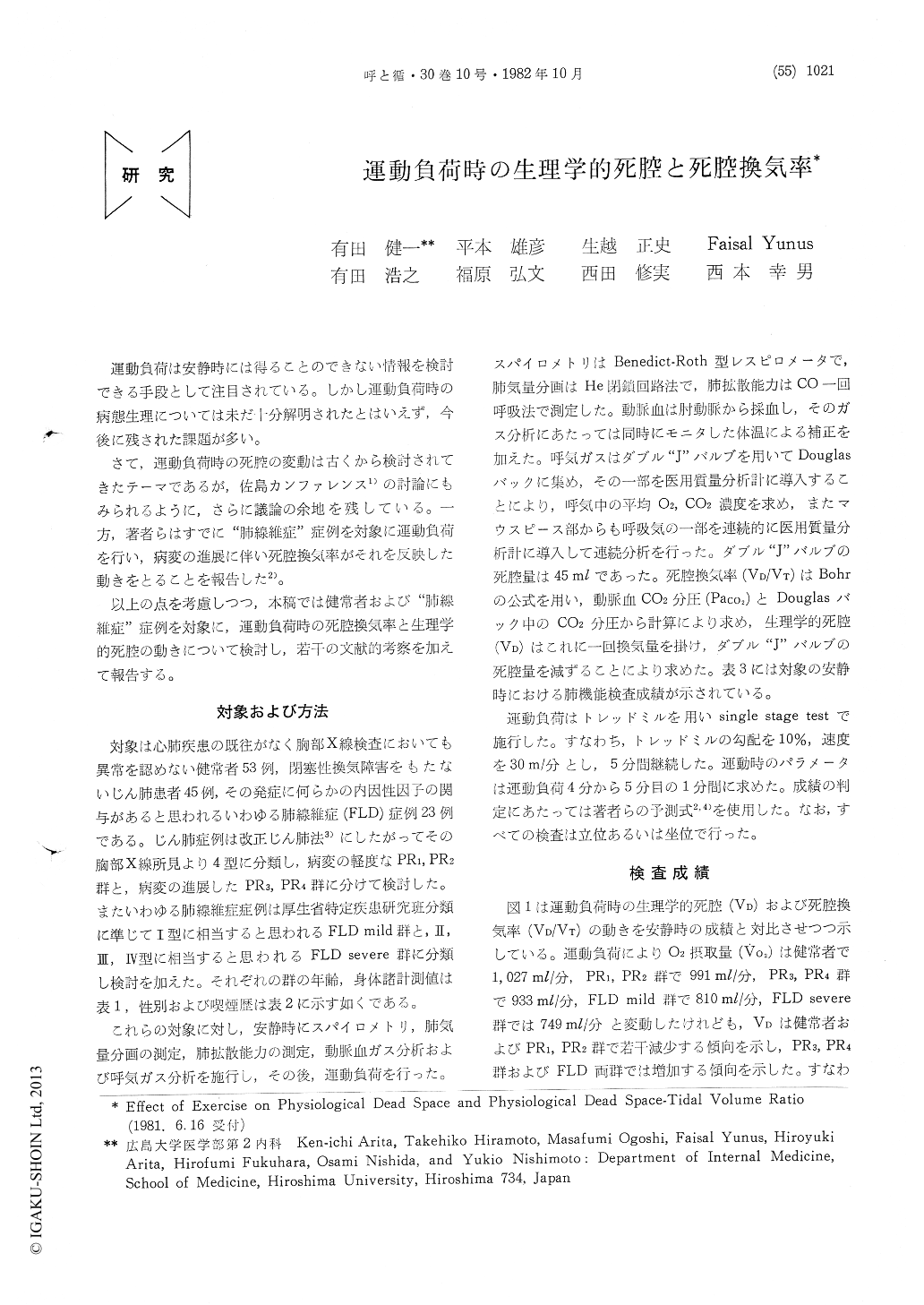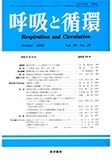Japanese
English
研究
運動負荷時の生理学的死腔と死腔換気率
Effect of Exercise on Physiological Dead Space and Physiological Dead Space-Tidal Volume Ratio
有田 健一
1
,
平本 雄彦
1
,
生越 正史
1
,
有田 浩之
1
,
福原 弘文
1
,
西田 修実
1
,
西本 幸男
1
Kenichi Arita
1
,
Takehiko Hiramoto
1
,
Masafumi Ogoshi
1
,
Faisal Yunus
1
,
Hiroyuki Arita
1
,
Hirofumi Fukuhara
1
,
Osami Nishida
1
,
Yukio Nishimoto
1
1広島大学医学部第2内科
1Department of Internal Medicine, School of Medicine, Hiroshima University
pp.1021-1025
発行日 1982年10月15日
Published Date 1982/10/15
DOI https://doi.org/10.11477/mf.1404204095
- 有料閲覧
- Abstract 文献概要
- 1ページ目 Look Inside
運動負荷は安静時には得ることのできない情報を検討できる手段として注目されている。しかし運動負荷時の病態生理については未だ十分解明されたとはいえず,今後に残された課題が多い。
さて,運動負荷時の死腔の変動は古くから検討されてきたテーマであるが,佐島カンファレンス1)の討論にもみられるように,さらに議論の余地を残している。一方,著者らはすでに"肺線維症"症例を対象に運動負荷を行い,病変の進展に伴い死腔換気率がそれを反映した動きをとることを報告した2)。
The changes of physiological dead space and physiological dead space-tidal volume ratio were investigated during physical exercise. Treadmill exercise was performed for 5 min. (grade ; 10%, speed ; 30 m/min.) in 53 healthy subjects, in 45 pneumoconiosis patients and in 23 fibrosing lung disease (FLD) patients.

Copyright © 1982, Igaku-Shoin Ltd. All rights reserved.


